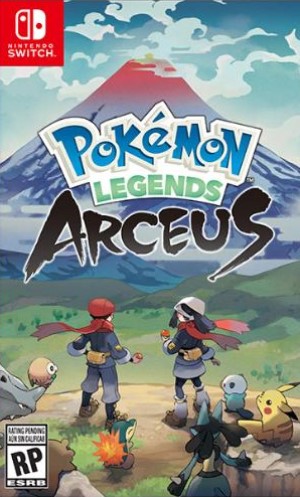
The last decade or so has been pretty rough for Pokemon fans. Although one can make an argument that every Pokemon game is fundamentally a fun game owing to the soundness and compelling addictiveness of the core formula, the last decade has seen cracks start to show in that foundation somewhat. The 3DS and Switch eras, marked by the transition to 3D and HD respectively, have seen developers Game Freak repeatedly fail to not just deliver players the features and content – both quality and quantity – that they expect from the series, but also make a bunch of questionable and misguided decisions that seem to lose sight of why Pokemon ended up becoming the biggest media property on the planet to begin with.
So it makes sense that for a lot of people, Pokemon Legends Arceus, announced last year, had, in the lead up to its release, not inspired confidence. Ideally it should have, of course – a systemic open world Pokemongame that brings the emphasis back on exploration and adventure, and seems to make some long overdue changes to the formula is just what the doctor ordered. But Nintendo and The Pokemon Company’s marketing for the game has been curiously subdued, and everything we saw of the game not only looked lacking graphically, but also seemed to indicate a game that, while conceptually sound, was not going to get the time and resources it needs to properly realize its potential, and would end up being another half-hearted and disappointing effort instead.
Thankfully, that’s not how it happened.
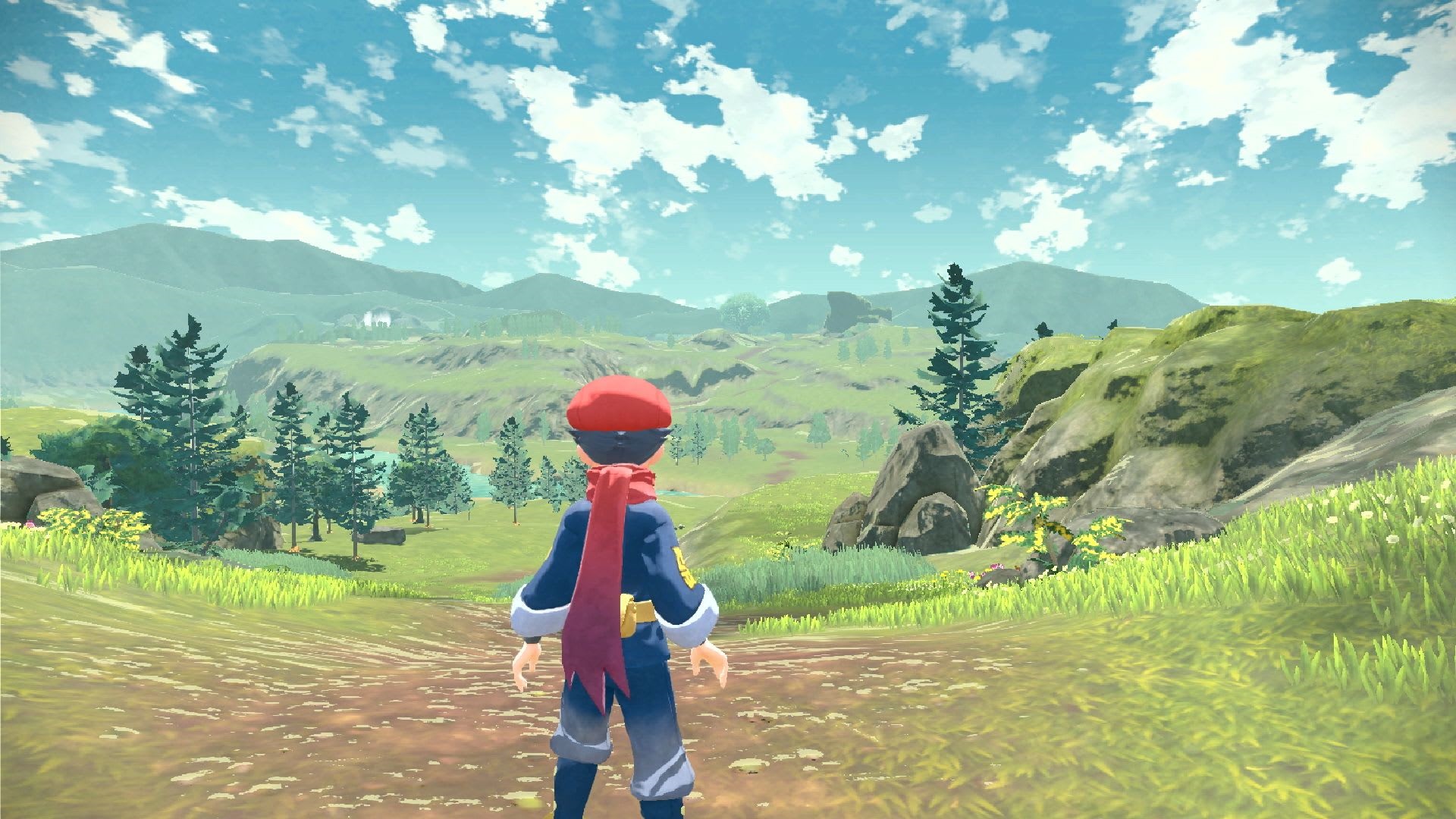
"Pokemon Legends is so marvelously, thoroughly, and comprehensively well designed, and so good at what it does, that it’s actually shocking that Game Freak managed to get so much so right on their first go."
I’ll put it plainly. Pokemon Legends: Arceus is a total delight, an incredible revitalization of the Pokemon formula that delivers its best thought out, most daring and ambitious, and just overall, its best game in years. It is so marvelously, thoroughly, and comprehensively well designed, and so good at what it does, that it’s actually shocking that Game Freak (who until now have mostly made glorified handheld games) managed to get so much so right on their first go. It’s an incredible game that provides the exact kind of evolution of the formula that everyone has been dreaming of for decades now, but most had given up hope on by this point. It’s a dense, long, high quality adventure, putting the emphasis squarely on player driven gameplay loops, a game that manages to feel and be good not just “for a Pokemon game”, but, much like the series’ highest points to date, just be an incredibly compelling and addictive adventure by almost any metric.
The degree to which the formula has been rethought cannot be overstated. The open world format is the obvious change here, of course, but on a micro and macro scale, so much more has changed now too, and it has so many far reaching and immediate implications in terms of the moment to moment gameplay loop. And all those changes end up feeding into and perpetuating the same core gameplay loop, also in the process compensating for typical pitfalls that a game of this nature might otherwise have. For example, the way the Pokedex works in this game is crucial to its gameplay loop working. Essentially, Pokemon Legends takes place in the distant past, in medieval Sinnoh, the region from Pokemon Diamond and Pearl, back when it was being populated by people for the very first time, and it was called Hisui.
In context of this setting, Pokemon Legends sees players catalog and observe Pokemon for the very first time. This means that unlike other Pokemon games, simply catching a Pokemon isn’t enough to learn everything about it. No, you have to go out into the wild, catch multiple specimens of each species, see how they behave and interact in their environment, with each other, and battle. Think of how New Pokemon Snap handled its missions, actually – that’s pretty much identical to how the Pokedex in Pokemon Legends works. The reason this is important is because it makes every single encounter you ever have be meaningful. Even if you are just catching your sixth Bidoof or Starly, that still means something because it contributes to fleshing out those creatures’ entries in the Pokedex further.
This, in turn, is important because Pokemon Legends uses the Pokemon that populate its multiple massive maps as the singular incentive to actually explore. The actual world design in Pokemon Legends is nowhere near genre stalwarts such as The Legend of Zelda: Breath of the Wild or even something like Ghost of Tsushima; the world itself does not necessarily invite much exploration in and of itself. Rather, the player is incentivized and pull to go off exploring and adventuring in all directions because you’re going to find different Pokemon in different areas. In fact, to find the rarer Pokemon species, you have to explore all the nooks and crannies of all maps; put simply, the more you explore, the more Pokemon you find, and the more Pokemon you find, the more you complete the Pokedex. The more you complete the Pokedex, the better the rewards you get to go back out to observe and catch even more Pokemon.
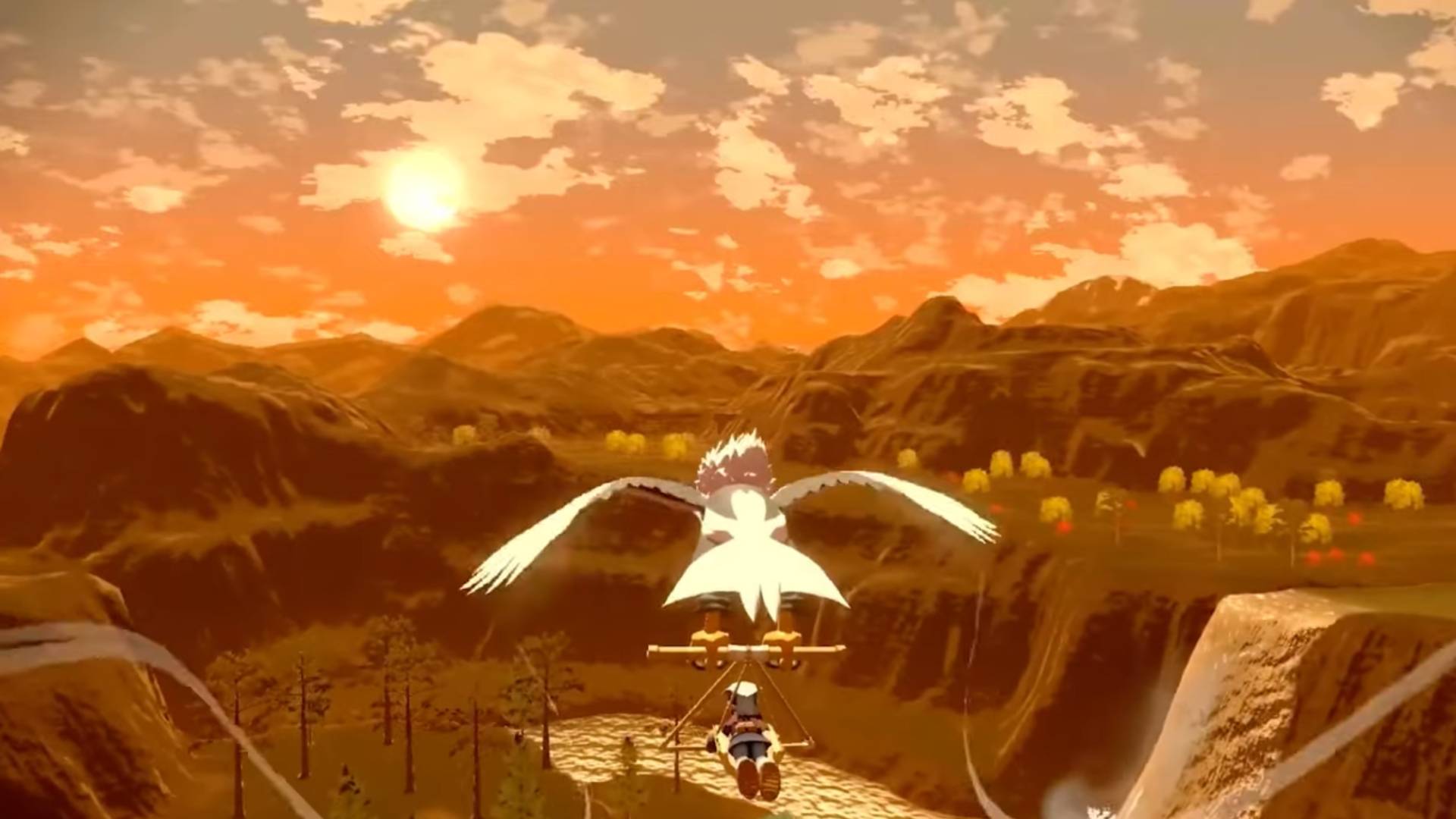
"A game like Pokemon Legends can only work if it sells the fantasy of these creatures in the wild being, well, actual creatures in the wild. This means that each Pokemon needs to look good, act believably, be distinct, and organically fit into its environment. Legends excels at that."
It’s a beautifully designed core loop, but it is elevated further by just how much every other system in the game feeds into it. Take crafting, for example. As you explore Hisui’s various biomes, you pick up a lot of resources – from plants and fungi to ores and rocks, and more beyond. This raw material can then be used by you, the player, to make everything, from Pokeballs (to catch Pokemon) to healing items (to keep your party’s health topped up) to treats that can be used to lure and attract Pokemon (the better to be able to catch them) to items that can help your character sneak around better without being noticed by wild Pokemon, and more. This means as you are exploring the map, you’re always picking up on these resources, that you can then use to craft more items to catch more Pokemon, which requires you to explore more of the map, which sees you picking up more resources, and so on and on. As I said, the way things fit together is almost beautiful from a game design perspective.
Those Pokemon that you are catching, they are the stars of this show. A game like Pokemon Legends can only work if it sells the fantasy of these creatures in the wild being, well, actual creatures in the wild. This means that each Pokemon needs to look good, act believably, be distinct, and organically fit into its environment. Legends excels at that. Pokemon in the wild interact to each other, to the player, to the world – you might see a bunch of Buizel gathering around an alpha Floatzel, for example, or you might see Bidoof scampering off when they realize you just caught one of their number. You might see a Luxray curling up to go to sleep under a rock when it rains, or you might see the cordyceps inspired zombie-like Paras and Parasect shambling and pursuing you (or really, anything else they see) hilariously aggressively, launching their attacks to try and immobile you. I mentioned earlier the world itself isn’t particularly special in terms of how it is designed and laid out, and that it uses Pokemon to cover up for that and incentivize player engagement – that would never have worked if the Pokemon weren’t so thoroughly well designed in Arceus, better than in any other mainline game to date. And thankfully, they are really well designed here. Each species has distinct, and intuitively believable, behaviours, individual Pokemon can still have perceptible personality traits, and Pokemon interactions – whether it is passive interactions as with the environment, or active interactions in a Pokemon battle – are all a sight to behold. You can even send out all your Pokemon into the world and just see how they interact with each other, or you. It really adds this sense that these creatures are actual unknowable wildlife that you are learning more about.
This wildlife is also dangerous. Pokemon games have always told us that Pokemon are dangerous, and can attack people – but the games, much like the rest of the property, are increasingly sanitized to take away this edge, and present the Pokemon world as a happy one where everyone and everything gets along. Arceus goes right back to the original premise – Pokemon are dangerous creatures, and people are, rightly, terrified of them. The game’s setting, which predates people and Pokemon having created a society of coexistence, emphasizes and repeats this fact constantly. You are told by everyone how afraid they are of Pokemon, you are even told, in very literally as many words, that you might die if you don’t take care when out in the wild (yes, the game actually tells the young player character upfront there is a good chance of them dying, which was a bit unexpected, to say the least).
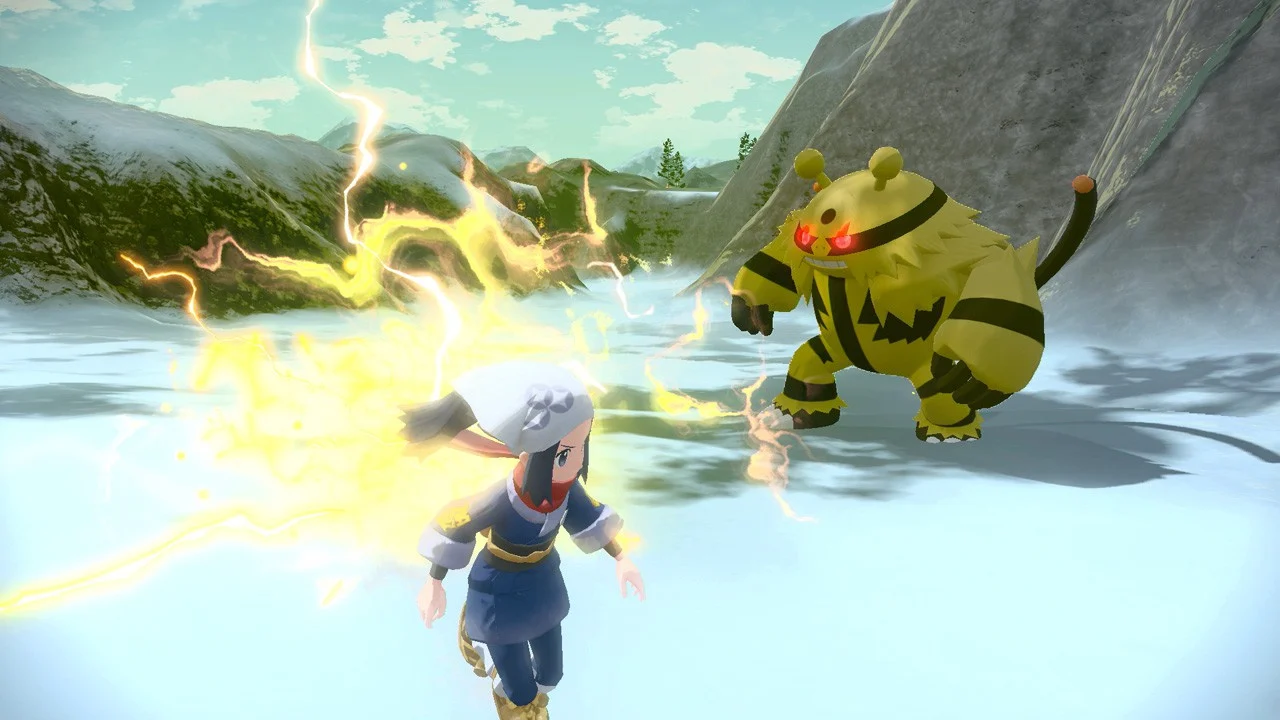
"This game marks the first time Pokemon can directly attack players. This creates a very real sense of danger and threat when you are exploring in the wild, and more than anything, makes you as the player be careful when approaching Pokemon."
But more than telling us, Legends shows us. This game marks the first time Pokemon can directly attack players. While it depends on the species – something like Starly is skittish and will run off if it sees the player, while something like Ursaring is an apex predator, and is going to viciously attack and pursue the player – this creates a very real sense of danger and threat when you are exploring in the wild, and more than anything, makes you as the player be careful when approaching Pokemon, taking measures to mask your approach and stay out of their sight. If a Pokemon sees you, they often can and will attack you – not just physically, but sometimes they might use their elemental attacks, such as Rock Slide, Hydro Pump, or Hyper Beam, on the player. And the player can’t take too much damage either – four or five straight hits and you get knocked out, returned to the nearest base camp, and lose a good chunk of the resources and loot you may have collected. So you have to be careful.
This kind of Pokemon behavior pervades the game’s design in other ways as well – for example, you might decide to engage a Pokemon in battle to try and catch it, but if there are other particularly aggressive Pokemon nearby, they may end up joining the fight too – and then gang up on you and your Pokemon to knock them out and then come after you instead. It’s delightful. And I haven’t even mentioned the Alpha Pokemon! These are supersized, hyper powerful, high level variants that you can find for any species in the wild, denoted by an icon next to their name and glowing red eyes. They are extremely difficult to take down (because they have great stats as well), harder still to catch, and they are far more aware of the player’s presence, and far more aggressive about doing something about it.
All of this comes together to make the most challenging Pokemon game we have had, well, probably ever honestly. To be clear, Legends isn’t a hard game. It is, however, a game that demands you actively pay attention to it and engage with its systems, and a game that isn’t afraid to slap back at the player if they get careless.
The rewards of finding these great rare Pokemon and resources to explore definitely incentivize exploration, but if traversing the world was not enjoyable, then ultimately many players would end up just giving up on going off the beaten path and stick to the critical path. This is another area where Legends is shockingly great. The core player character movement is, from the get go, more full featured than in other games in the series (you can run, crouch, and dodge, that last one being critical to avoid Pokemon attacks aimed directly at you), but once you start getting ride Pokemon, traversing the world becomes a joy. From Wyrdeer, who can dash across massive expanses rapidly and jump up vertical surfaces you may otherwise not have been able to reach, to Basculegion, which you can use to traverse water, to Braviary, who lets you glide and soar over the maps in a near infinite lasting take on Breath of the Wild’s glider, the actual act of traversal and exploration can be surprisingly fun, and at the very least ensures it doesn’t get in your way to deter you from exploring and finding more Pokemon.
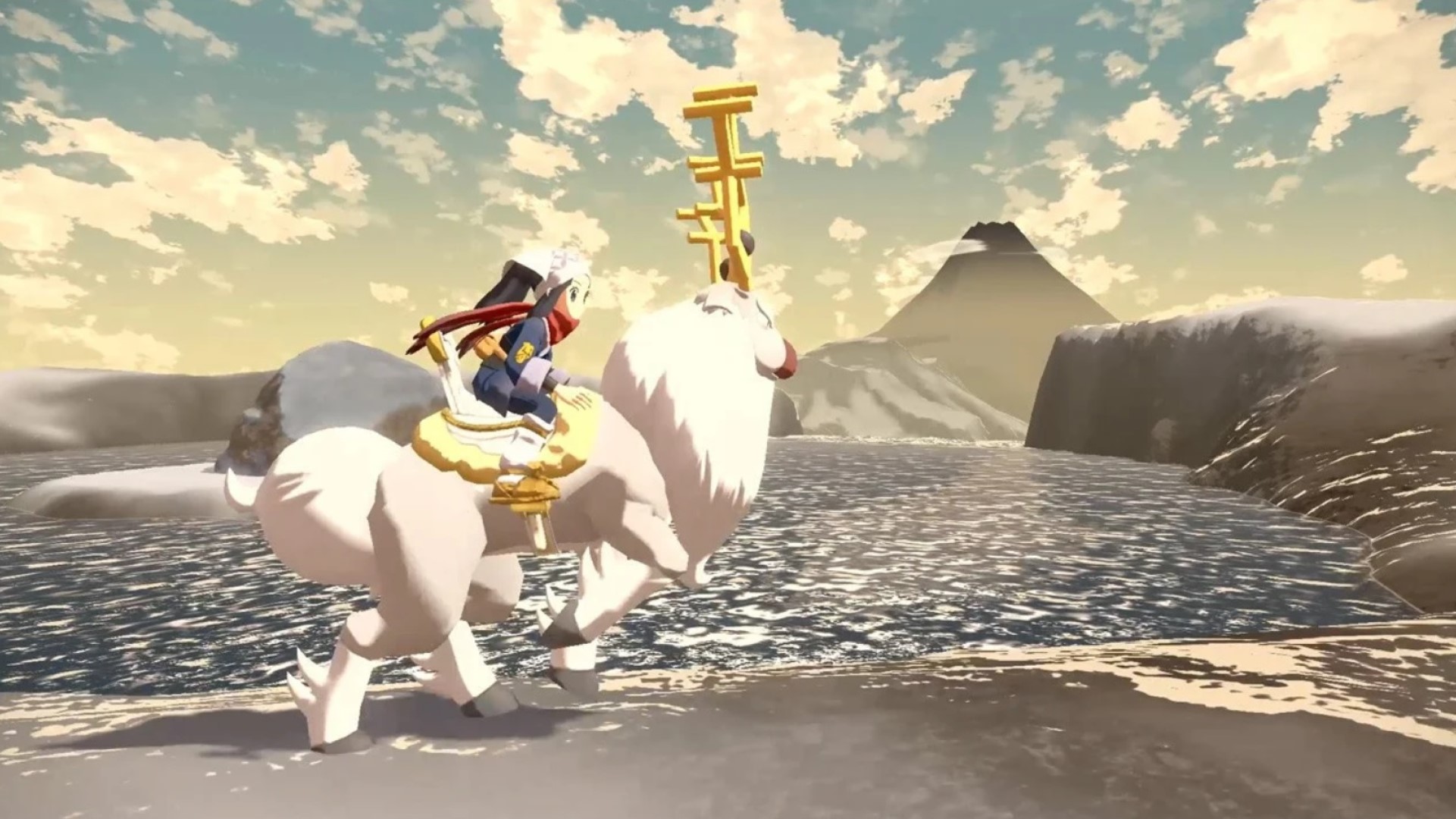
"The new battle system mostly works well enough for this game – it isn’t something that I can see existing in a future mainline title, especially not if it will have PvP and competitive battles. The system right now is well balanced enough for a singleplayer game, but there is too much fuzziness around the edges for it to have the predictability that is necessary for a PvP driven battle system."
There are many other changes as well – the changes to the battle system are well publicized, with Legends seeing the first time in 26 years that the series has made any meaningful user facing change to how battles work. Battles are no longer strictly round based, with the turn order (which you can pull up at any time) instead being determined by a combination of the combatants’ speed stat, move priority for what attacks they are using, and, in the headlining feature for this game’s battle system, what stance your Pokemon uses when using that attack. There are three stances – Normal, Agile, and Heavy, with Agile modifying the attack to hit less hard, but be far faster (getting you more turns, including consecutive ones at times), and Heavy modifying the attack to hit far harder, at the expense of losing you turns.
The new battle system mostly works well enough for this game – it isn’t something that I can see existing in a future mainline title, especially not if it will have PvP and competitive battles. The system right now is well balanced enough for a singleplayer game, but there is too much fuzziness around the edges for it to have the predictability that is necessary for a PvP driven battle system. Other changes to the battles, however, are game changing, and not something I can ever go back from. There are, for example, no battle transitions, and all the fights with Pokemon and trainers take place right on the open world, seamlessly. This is such a small, simple, and obvious change, but the impact of it is so profound and far reaching – for example, in maps as large as this game’s, having constant battle transitions could well end up disorienting the player or making them lose sight of where they were headed to; the length of those battles could also well act as a deterrent to engaging in too many (which in a game about observing and catching Pokemon, would be a bit of a disaster).
This might sound like a small thing, but I can’t tell you how slick it is, and how well it works – you can, for example, send a Pokemon in your party to go tackle a tree and collect the berries that fall from it, another to mine oar from an oar outcrop, you can sneak and throw a Pokeball at a couple of Pokemon, and engage another one in a battle – all at the same time, in real time. It saves so much time and tedium – the battles taking place in real time on the game world with no broken out screens or transition is honestly the most revolutionary change to the series’ core loop that I can think of, and it will be outright impossible for me to go back to how the old games used to play after this.
Special note also needs to be made of the game’s setting, and how well it sells it. As I said, this game takes place hundreds of years before any other game in the series, and Legends sells that setting remarkably well. From NPC dialog to more environmental storytelling, everything in the game does a great job of establishing the time and place of ancient Sinnoh that you as the player find yourself in. The game runs with its conceit of being a prequel to the entire series, and is chock full of references to things that will happen in the other mainline games that long time players should really enjoy picking up on.
This is also a surprisingly story focused Pokemon game – you’re not just randomly going out into the wild to complete the Pokedex, there is an actual, active, pervasive story here that is associated with every single main mission you take on. It’s written well enough, and probably ranks as one of the best stories in the series – usually, no one plays Pokemon games for the story, but Legends is probably the first time I can see the story being an active factor in someone’s enjoyment of the game. It also has the good sense to stay out of the player’s way and let the game loop take over for the bulk of your play time, though the beginning especially can see a lot of cutscenes, between a surprisingly extensive (if justified for once) tutorial sequence, and a lot of world building and stage setting for the story that follows.
Not everything Legends does is great, though, and there are definite telltale signs here of a game that would have benefitted from some more development time. The chief of these is just how bad the game looks. There are no two ways about it – this is an ugly game. It’s an ugly game not just technically (with low resolution textures, poor draw distances, pop in, flickering shadows, and thankfully sporadic framerate drops), but even in terms of the art style. You can kind of see what Game Freak was going for here, which seems to have been an almost impressionistic Japanese aesthetic – but for whatever reason, it doesn’t work out too well. There are times the game threatens to be somewhat pretty, due to the art style actually coming together, but most of the times, it is a fairly ugly game. In my experience, it is never disruptively so – as in, the game’s graphics stop mattering after the gameplay loop gets going and you stop noticing the visual deficiencies. However, that’s ultimately a subjective threshold, and for those who do place importance on how the game they are playing looks, I can see the graphics being single handedly deal breaking. I want to say that if you think there is any chance you can see past how it looks and play it, you should, because it’s an amazing game – but if you can’t bring yourself to play something that looks like this, I honestly can’t really blame you either.

"There are no two ways about it – this is an ugly game. It’s an ugly game not just technically (with low resolution textures, poor draw distances, pop in, flickering shadows, and thankfully sporadic framerate drops), but even in terms of the art style. You can kind of see what Game Freak was going for here, which seems to have been an almost impressionistic Japanese aesthetic – but for whatever reason, it doesn’t work out too well."
For as bad as the game looks though, I want to make note of the fact that the music is incredible – it might rank as one of the best soundtracks in the series (and that really is saying something). From the Jubilife Village theme (that slowly builds up and layers on itself to slowly start resembling the Jubilife City theme that players might know from Diamond and Pearl as you build the town up) to the battle music (which is usually excellently done remixes of battle themes from Diamond and Pearl) to the amazing music you experience out in the wild (which includes mostly new compositions, though you often hear snatches of songs you might recognize from older games), this game’s music is flat out incredible, and almost singlehandedly makes up for the visuals being what they are.
Graphics aside, the game’s other shortcomings are also the kind of thing that would benefit from a longer development cycle – for instance, a camera that can get in the way (and especially in some high intensity boss fights that rely on prompt player response), or the storytelling scenes that are begging for some form of voice acting (even limited grunts and groans like in Zelda would be acceptable!), as well as some UX oddities.
These problems, such as they are, do exist, and honestly make me desperately wish the game had gotten just a bit more time in the oven – so that it could have ironed out that jank. But even though that didn’t happen, what we got here is so incredibly well designed and thoroughly compelling that the game overcomes those shortcomings and issues either way. A startlingly accomplished work of game design, Pokemon Legends Arceus is the game fans have been desperately hoping for for years, come to life at last – an incredible game that manages to deliver a fantastic experience, and not just “for a Pokemon game” either. For the first time in a very long time, there is reason to be excited for the future of the franchise.
This game was reviewed on Nintendo Switch.
An incredibly well designed and addictive gameplay loop, that emphasizes player agency and curiosity over all else, and rewards it abundantly; an incredible amount of QoL changes and updates that were long overdue; incredible soundtrack; surprisingly decent story; loads of great changes to the Pokemon formula that all work out for the better; Pokemon have an abundance of personality that comes through in so many ways, big and small.
The game is outright ugly looking most of the times; some jank and lack of polish (especially with the camera and UX).










